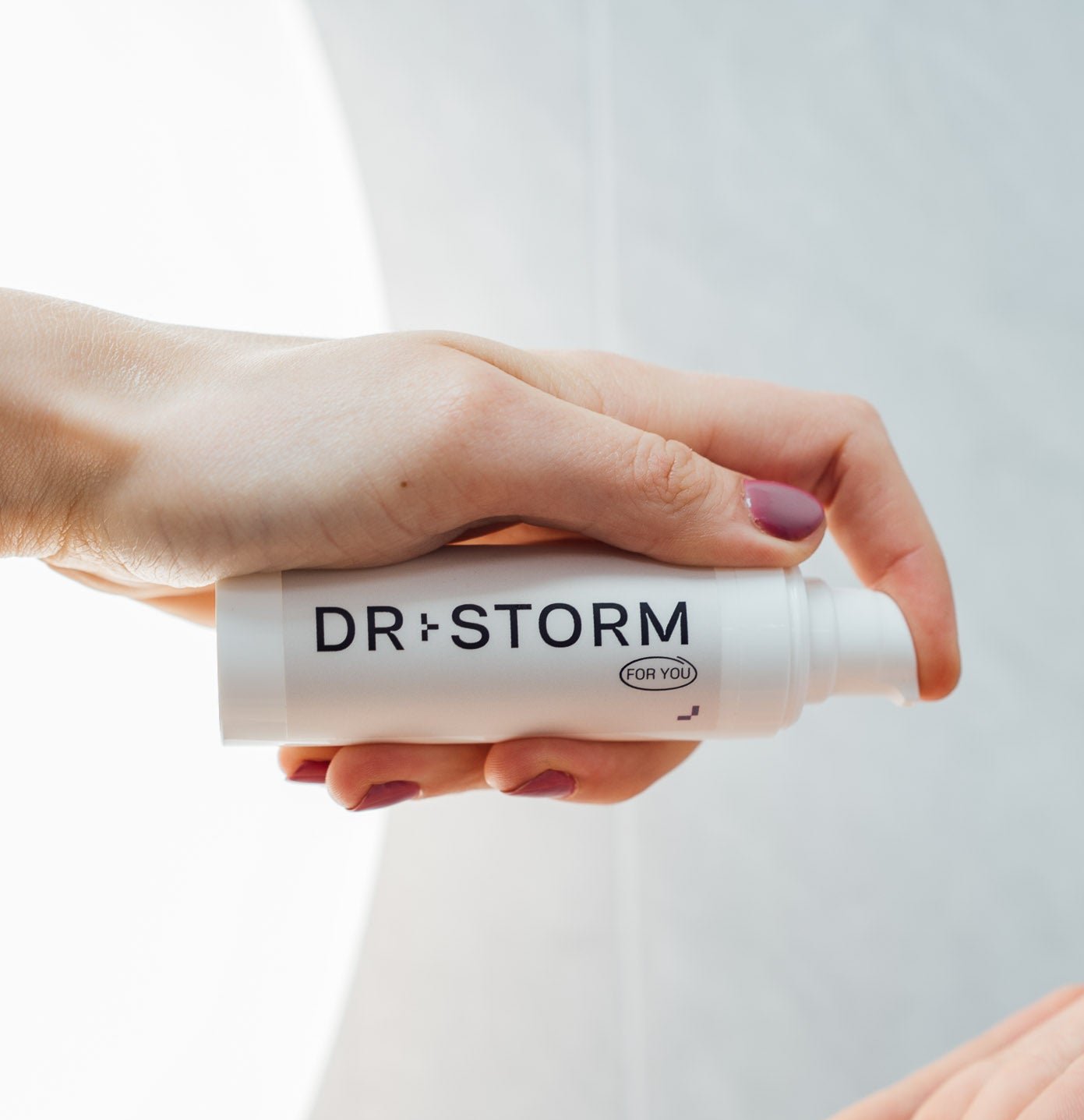Dull, dry, irritated, red & itchy/flaking skin are the hallmarks of a disrupted skin barrier. Lines, wrinkles and pores can also become more apparent. Apart from feeling uncomfortable, and not looking great, a disrupted skin barrier can no longer perform its protective duty. So anything you apply to your skin can result in burning and stinging or even contact dermatitis. In extreme cases, just washing your face with water can cause irritation.
When people note signs of skin barrier damage many people turn to exfoliants to get their glow back. This will almost always make things worse!
The Dr Storm team will always advise you how to minimise skin barrier disruption so you can use your
prescription treatment as frequently as possible to get results. It takes time (4-6 weeks, sometimes much longer in severe cases) to repair your skin barrier, so best thing to do is to try not to damage it in the first place!
What is a moisturiser?
Traditionally took the form of emulsions, but now commonly available as oils, gels and serums.
The texture chosen is largely due to preference. Those with drier skin may like emulsions or oils while oily skin types may prefer gels which tend to be lighter.
The basic function of a moisturiser is to trap water in the skin! That's it!
What is in a moisturiser?
-Solvent : The carrier and the bulk of the formulation - usually water
-Humectants: Ingredients that attract, absorb & hold water eg Glycerin, Hyaluronic acid, Urea & Propylene glycol
-Emollients: Tend to have an occlusive action reducing trans epidermal water loss. Some are used for their light feel Eg Silicones, Esters, and some for their heavier more occlusive feel eg Vegetable oils, Natural butters, Silicones & Petrolatum derived ingredients
-Viscosity controllers/ Stability enhancers : Ingredients added to provide texture and thickness to the formulation .eg veg gums, polymers, starches, waxes.
-Emulsifiers: The glue that keep the water and oil parts together.
-Preservatives: Stop products going mouldy!
-Actives: The marketing bit! A lot of product claims are derived from this part of the formulation...
Formulations differ by playing around with the different categories of raw materials, using different levels, using different materials.
The choice of oil and oil content determines how heavy or light a formulation will feel. Product texture and viscosity can be changed by adding water or oil thickeners rather than more oils. These materials are also sometimes used to aid product stability to stop the product separating.
Legally, all claims made on the bottle of moisturisers have to be substantiated. However, there are no rules as to how these have to be substantiated. User testing is a common way to prove claims...arguably not always the most reliable and certainly a very subjective source!







